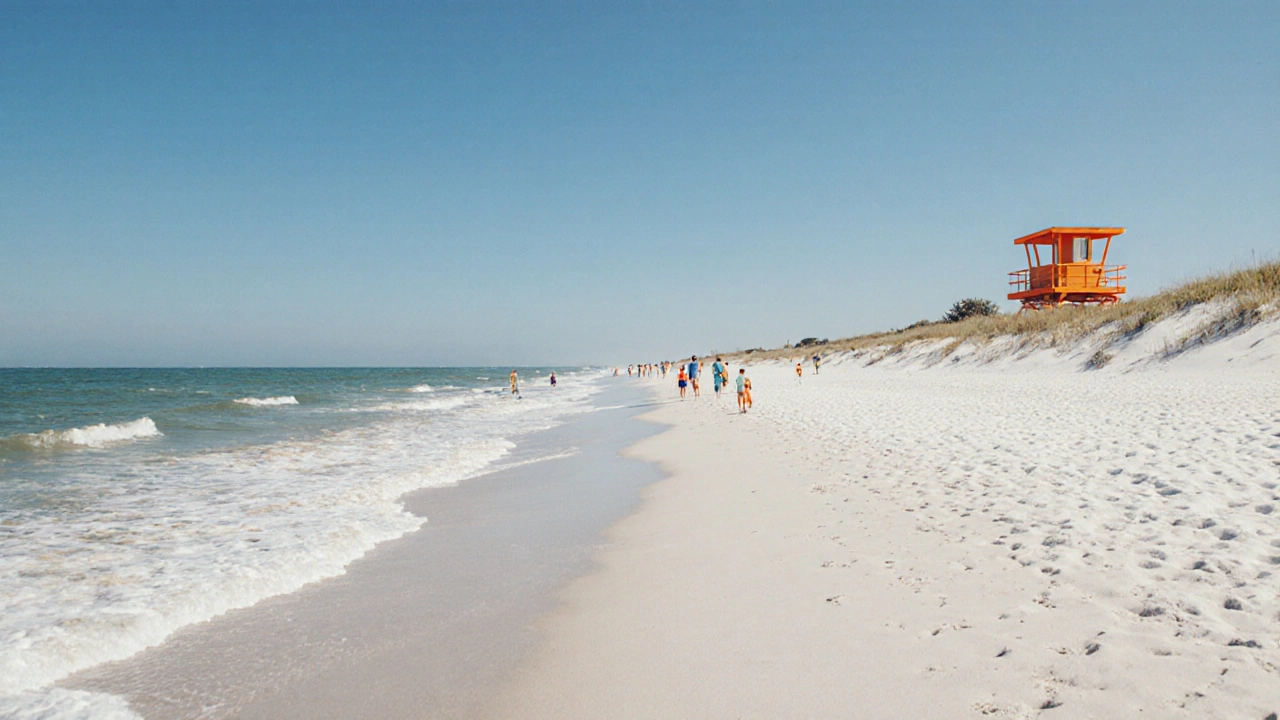Edisto Beach Tide: What Every Camper, Motorhome Owner, and Kayaker Should Know
When you check Edisto Beach tide, the regular rise and fall of water at Edisto Beach in South Carolina. Also called Edisto tidal pattern, it sets the clock for when you can safely pitch a tent, park a motorhome, or launch a kayak. Knowing the tide helps you avoid getting your gear soaked, find dry ground for a campsite, and time your boat launch for the safest water depth. In short, the tide is the hidden schedule that powers every coastal adventure on Edisto.
To turn that schedule into an actionable plan, most visitors rely on a tide table, a chart that lists high and low tide times for each day. The table shows the tidal range—the difference between high and low water levels—so you can see how much shore will be exposed at low tide. This matters for coastal camping, where a low tide often reveals extra sand, making it easier to set up a tent or slide a motorhome into a parking spot without splashing. At the same time, high tide can be a blessing if you need deeper water for a smooth boat launch or a surf session.
High tide isn’t just about deeper water; it also affects safety. When the water is at its peak, the shoreline can become more prone to sudden waves, especially during a storm surge. That’s why many campers keep an eye on the forecast and avoid setting up too close to the waterline right before a high tide. Conversely, low tide offers a chance to explore tide pools, collect shells (responsibly), and walk farther out on the sand. For motorhome travelers, low tide often means the access road remains dry, reducing the risk of getting stuck in mud.
How to Use Tide Data for Your Trip
Start by pulling the latest tide table for Edisto Beach—most local websites update it daily. Match the high‑tide times with your planned boat launch or surf session, and line up low‑tide windows with your campsite setup. If you’re driving a motorhome, note the parking area’s elevation; a low‑tide window of at least two hours before sunrise usually guarantees a dry spot. Remember that tidal cycles repeat roughly every 12.4 hours, so you’ll often have two high and two low tides each day. Use this rhythm to plan meals, activities, and rest periods, keeping your itinerary flexible enough to shift if the weather changes.
Another practical tip is to bring a simple tide‑tracking app on your phone. Most apps let you set alerts for the exact moment high or low tide hits a chosen location, so you won’t have to stare at a printed chart all day. Pair the app with a weather radar to watch for incoming storms that could amplify tide heights. By combining real‑time tide alerts with a solid understanding of the tide table, you turn a potentially confusing natural cycle into a reliable planning tool.
Finally, respect the environment. When the tide goes out, it leaves behind delicate ecosystems. Avoid trampling tide‑pool life, and never leave trash on the sand. Keeping the shoreline clean ensures the tide will continue to be a friend rather than a foe for future visitors.
Armed with this tide knowledge, you’ll be ready to pick the perfect spot for your tent, find a safe berth for your motorhome, and launch your kayak at the ideal moment. Below you’ll find a curated selection of articles that dive deeper into campsite selection, motorhome buying tips, bathroom hacks on the road, and more—each piece ties back to making the most of Edisto Beach’s ever‑changing shoreline.
Can You Swim at Edisto Beach? Full Guide to Ocean Swimming Conditions
Discover if swimming at Edisto Beach is safe, learn the best months, tides, safety tips, and nearby facilities for a worry‑free ocean dip.
